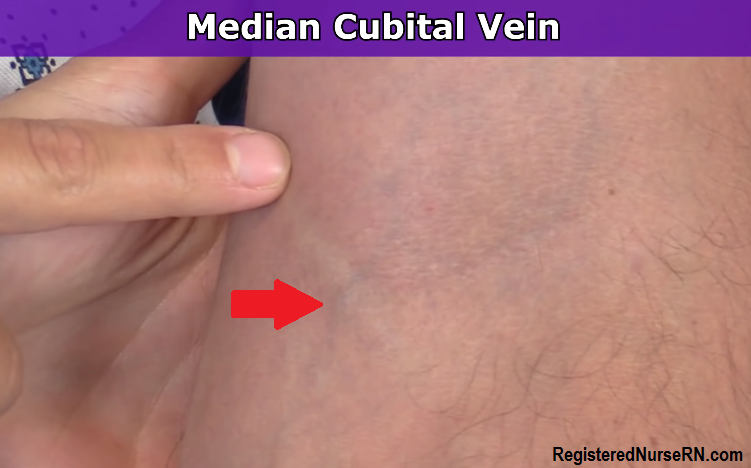Veins on Arm Blood Draw
In this article, I'm going to talk about the best veins for IV insertion and blood draws. Every nurse is different in what veins they love to use when drawing blood or starting IVs, but these are the ones I love.
Video
To be successful at drawing blood or starting IVs you must:
Know your veins! What I mean is that you must know the name of the veins in the arm and their locations. In addition, to the vein's quirks: what gauge of needle can it usually handle and does this vein tend to be a "roller".
What Veins I use for IVs and Blood Draws
- Median cubital
- Accessory cephalic vein
- Median vein of forearm
- Dorsal venous network
Quick Facts about these Veins
Medial Cubital: it's located in the bend of the arm where the cephalic and basilic veins connect. This vein is a gold standard for blood draws. In most patients, it is very large and easy to access.
Problems with this vein: It's in the bend of the arm, so it's not that great for IVs. IVs in this site will be very uncomfortable for the patient and infiltration can occur. I only use this site for an IV when I have to. For instances, I use this site if this is the only IV site the patient has (or the patient refuses to have an IV anywhere else) OR the patient needs an 18 gauge IV in a large vein for a test (ex: CT PE Protocol).
Accessory Cephalic Vein: this vein comes off the cephalic vein (hence its name) and is easy to stabilize.
It is relatively large so this vein can hold an 18 gauge and easily a 20 or 22 gauge IV. Tip: when going for this vein for an IV go below the bend of the arm rather than in the bend. This vein extends down below the bend.
Median Vein of the Forearm (median antebrachial vein): this vein comes out of the palm of the hand and runs along of the inner part of the forearm.
Problem: it is not as large as the previous two veins so it may not hold an 18 gauge. In addition, watch for this vein rolling and being deep on patients who have a lot of subcutaneous fat.
Dorsal Venous Network: these are the superficial veins found on the top of the hand. These veins are great for blood draws and IVs. However, these veins will easily roll if not stabilized. To help prevent this, have the patient make a light fist to keep the veins from moving. Learn more about how to prevent rolling veins.
Quick Things to Consider Before Starting an IV:
What is the patient here for…..a short stay or is to be hospitalized? Will they be receiving vesicant drugs or blood products? If so, select a vein that is large and use an appropriate sized needle.
Ask the patient where they would like you to draw blood or start an IV? Most patients are experts on this and know where the best vein is located.
Sometimes, you don't have options and have to go with what you find. Many times if a patient has severe kidney or cardiac disease they don't have great vein access. If you find that the patient is requiring a lot of fluids, needs IV drugs etc. you may want to ask the physician if this patient is a candidate for a central line.
More IV tips
Source: https://www.registerednursern.com/best-veins-iv-insertion-blood-draws/
0 Response to "Veins on Arm Blood Draw"
Postar um comentário